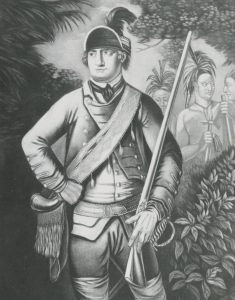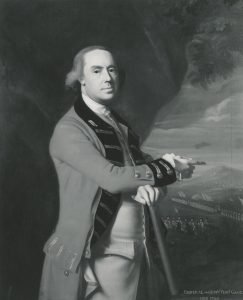 Since 1960, one of Mackinac State Historic Parks’ most popular publications has been The Doctor’s Secret Journal, an edited and annotated version of a dramatic journal kept by Surgeon’s Mate Daniel Morison between 1769 and 1772. Posted to Michilimackinac with the 60th (Royal American) Regiment, Morison recorded what he perceived as the regular verbal abuse, threats, and even physical violence directed at him and others by the officers of the garrison. According to Morison, his most frequent abuser was Ensign Robert Johnson (whose name Morison repeatedly misspelled as “Johnstone”). In the journal, Johnson comes off as petty, violent, and occasionally unhinged. But what was he really like? Was Johnson as awful a person as Morison claimed?
Since 1960, one of Mackinac State Historic Parks’ most popular publications has been The Doctor’s Secret Journal, an edited and annotated version of a dramatic journal kept by Surgeon’s Mate Daniel Morison between 1769 and 1772. Posted to Michilimackinac with the 60th (Royal American) Regiment, Morison recorded what he perceived as the regular verbal abuse, threats, and even physical violence directed at him and others by the officers of the garrison. According to Morison, his most frequent abuser was Ensign Robert Johnson (whose name Morison repeatedly misspelled as “Johnstone”). In the journal, Johnson comes off as petty, violent, and occasionally unhinged. But what was he really like? Was Johnson as awful a person as Morison claimed?

One particular instance of Johnson’s alleged character is well documented. In a list of Johnson’s “Exploits,” Morison claims he “Knock[ed] down Mr. Farrol, Barrack master, betwixt 70 & 80 Years of age, on board of the Gladwin.” In September 1767, Barrack Master Kennedy Farrel requested a court of inquiry be convened to investigate this attack, and post commander Major Robert Rogers complied. Before a court of three officers, several sailors from the schooner Gladwin recounted what transpired between Farrel and Ensign Johnson. Apparently, Farrel accosted a free Black man who was traveling aboard the vessel to Detroit, asking him “who he belonged to.” When the man replied that he was “a Christian and no prisoner,” Farrel hit him and then went below to retrieve a stick and continued beating the man. Johnson, who had been standing on the quarterdeck, intervened at this point. One sailor claimed that Johnson told Farrel “to let the Negro alone- it was a shame to beat him so” while another said he heard Johnson tell Farrel “he had no right to strike the Negro, who was a free man.” Farrel then approached Johnson and called him a “scoundrel” at least twice. Johnson hit Farrel, and the two men scuffled, Farrel tearing Johnson’s shirt in the process. The barrack master was poised to strike Johnson with his stick when the Gladwin’s boatswain intervened and separated them. Farrel then called Johnson a “cowardly scoundrel” and “a scandal to the regiment,” and vowed to “have his coat striped off his back” once ashore. Johnson replied that Farrel was “an old rascal” and vowed that “for two pence he would heave him overboard.”

Once ashore, Farrel requested a court of inquiry. Johnson, too, requested that charges be levied against Farrel, asking Rogers to forward his request to General Thomas Gage, commander of all British forces in North America. Unfortunately, it is unclear if this general court martial ever took place, or even what came of the court of inquiry. The fight aboard the Gladwin occurred just as long-simmering (and almost certainly false) accusations of treason against Robert Rogers were coming to a head, prodded along by Gage. Furthermore, Johnson was severely injured later that fall when his musket exploded, damaging his hand. He went to Detroit for treatment in November but volunteered to return to Michilimackinac carrying the warrant for Rogers’ arrest. His overland journey, made more arduous by winter weather, won him praise from his superiors at Detroit and Michilimackinac.
What to make of Ensign Johnson, then? Considering the court testimony, Morison’s claim that Johnson knocked down an old man without provocation rings false. Multiple sailors testified that Johnson in fact intervened to protect a free Black man from verbal and physical abuse, and Johnson’s superiors thought well of him in other circumstances. Did Morison have a grudge against Johnson, exaggerating his actions into those of a violent criminal? Unfortunately, we may never know the truth of Johnson’s character, as we only have Morison’s journal as evidence of most of the ensign’s alleged misdeeds. However, the incident aboard the Gladwin is good example of the need to always interrogate and evaluate your sources, no matter how salacious or dramatic they may be.









